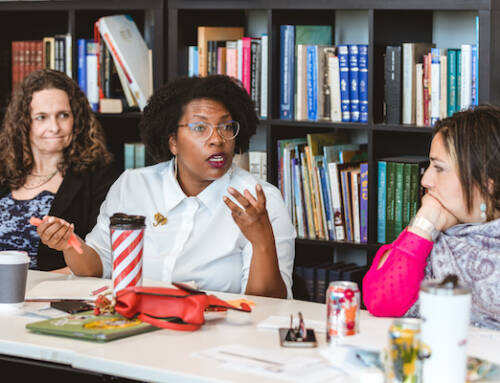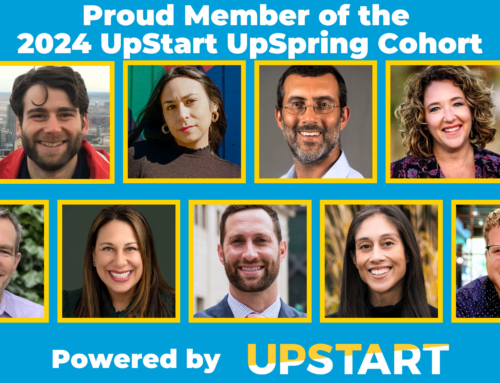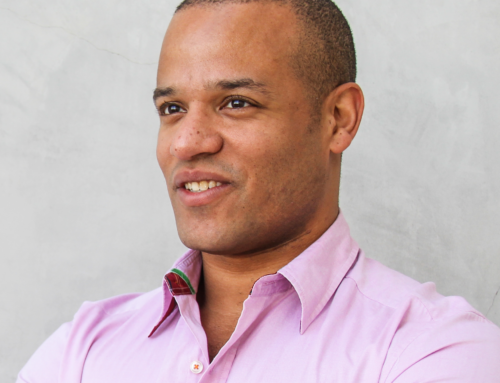November 8, 2017 | eJewish Philanthropy
By Maya Bernstein
In 2008, Sarah Lefton realized that the majority of the hip, young, Bay Area Jews she knew sorely lacked a basic knowledge of Jewish stories, characters, and practices. She also realized that they turned to their devices, rather than to books or classes, to get information. So, she decided to put out edgy, educational, easily digestible Jewish content for young adults online. Her product was so successful that not only did it engage the young adult population it was originally designed for, but also now reaches teens, school-aged children, and preschool kids and their families, and has become a thriving nonprofit (Bim Bam, formerly G-dcast).
Is Sarah a Jewish innovator? On the one hand, of course! Prior to her intervention, quality online Jewish content, offered with no religious strings attached but simply for the sake of increasing audience knowledge, did not exist. She brought together classic Jewish content and the most modern of mediums in a playful, creative, and educational way. She helped push traditional institutions, like schools and synagogues, to catch up to the digital age. On the other hand, the content of Sarah’s work – Bible stories, stories from the Talmud, and, most recently, a Jewish-values based program for young children – is as old as time.
What does innovation mean in the field of Jewish education, a field that, by definition, is attempting to keep the past relevant, to repackage it for the modern era, rather than abandon it for the sake of some unknown future?
Ari Y Kelman (Associate Professor, Stanford Graduate School of Education) and Maya Bernstein, authors of “Working Across and Working Between: A Theory of Innovation in Jewish Education,” argue that in the context of Jewish education, innovation is less about content, and more about partnerships. They highlight that Jewish educators need not reinvent the wheel. The content exists! We have profound and increasingly relevant stories, traditions, and values to share. While that content might need to be adapted, it does not need to be abandoned.
The report suggests that while a creative idea might be initiated by an individual, it cannot be accomplished without building relationships, creating partnerships, and investing in collaboration. It is as though they hold a mirror up to the Jewish community to show that the initiatives happening in our community may not be missing the mark so much as the people and organizations may be missing each other.
UpStart is a case in point. As an incubator in the Jewish world, its strength comes from its ability to nurture relationships between individuals and organizations, and to help them develop into sustainable endeavors. Where UpStart has had a significant impact is in helping to facilitate connections between smaller, more nimble, and less well-resourced organizations, as well as with others that are either peer or power organizations. The innovations UpStart has helped foster have come from both younger and more established organizations, and it has succeeded in producing generative relationships between these realms. This commitment to “disruptive collaboration” may be UpStart’s most important innovation.
This is not a new idea. The establishment of bureaus of Jewish education, the creation of age and grade-segmented classes, were, at the moment of inception, innovative ideas designed to modernize and replace the melamed and the heder. Over time, they became normative and they remain so despite well-documented challenges (Schoem 1984, Heilman 1983). The same could be said about the development of media products for American Jewish children, day schools, Jewish summer camps, and many other venues for the delivery of Jewish education that have become normative. Yet, few of these exist without partners. Camps and schools partner with movements; media producers need both distribution platforms and audiences. Samson Benderly’s vision for the Jewish version of centralized Jewish education was, itself, a model that emphasized connection and coordination. Yet in many ways we’ve regressed, and now too often work in silos.
BimBam now partners with a variety of organizations both young and old.These collaborations make the distribution of BimBam’s media possible within Jewish educational frameworks, which is crucial within the context of the rapidly expanding and relatively unstructured media landscape. Its website currently lists 19 partner organizations including Kevah and Moishe House (younger organizations) as well as the Union for Reform Judaism and the Hebrew Free Loan Association of San Francisco (older organizations). Perhaps even more innovatively, BimBam lists the URJ, NCSY, and Interfaith Family among its partners, indicating that BimBam can partner across even the most well-established divides in the American Jewish world. 50 years ago, such promiscuous collaboration would have been almost unthinkable.
We believe that the challenge facing anyone with an interest in offering inspiring and relevant Jewish education is two-fold: On the one hand, how might you continue to creatively adapt and modify the content you are offering so that it is meaningful and relevant to the people you are educating and serving? And on the other, perhaps the most profound innovation you can make is in the realm of your collaborations. How might you push the boundaries of your partnerships and explore the many ways to work across and between?
Maya Bernstein is an Associate at UpStart, and consults and teaches widely on the topics of change leadership, innovation, and creativity.
Our purpose is to enable entrepreneurs to bring bold Jewish ideas to light. We help them reach Up to people in new ways that are meaningful, more inclusive, and create a brighter future for our Jewish community and the world we share.





